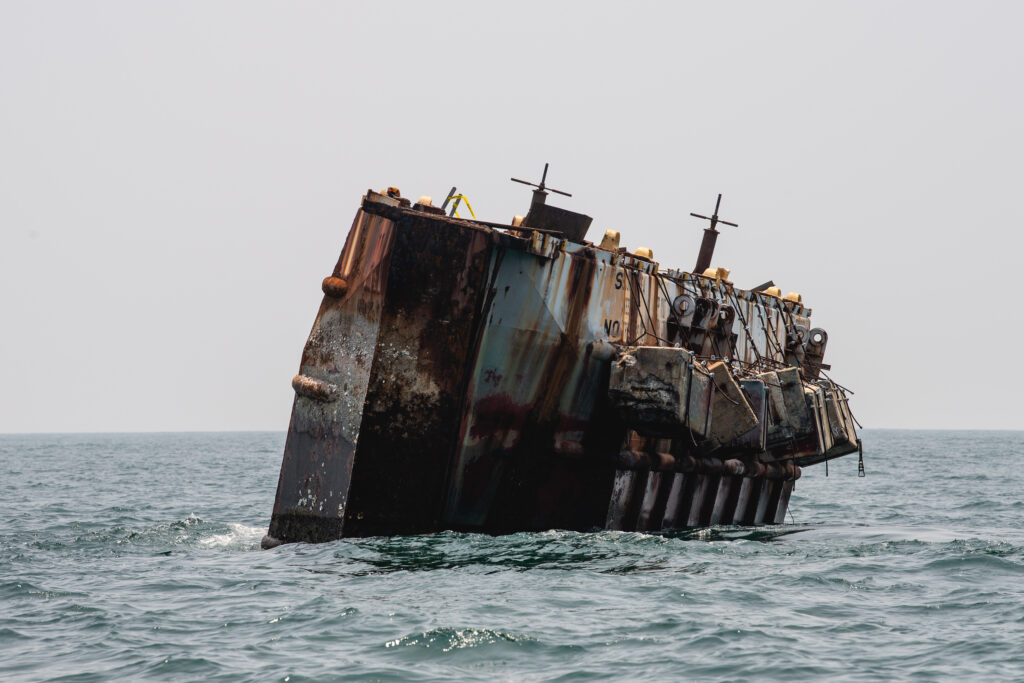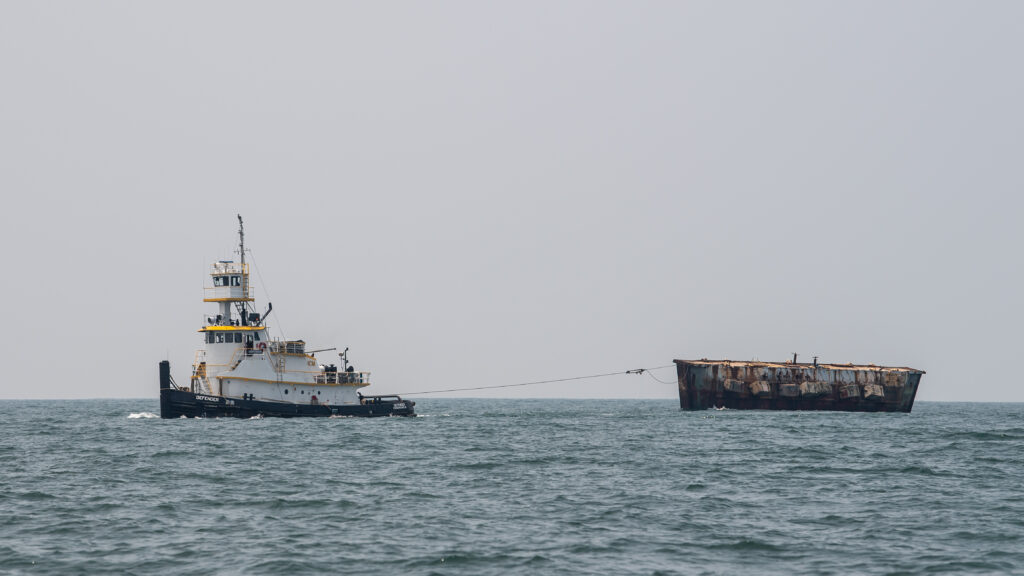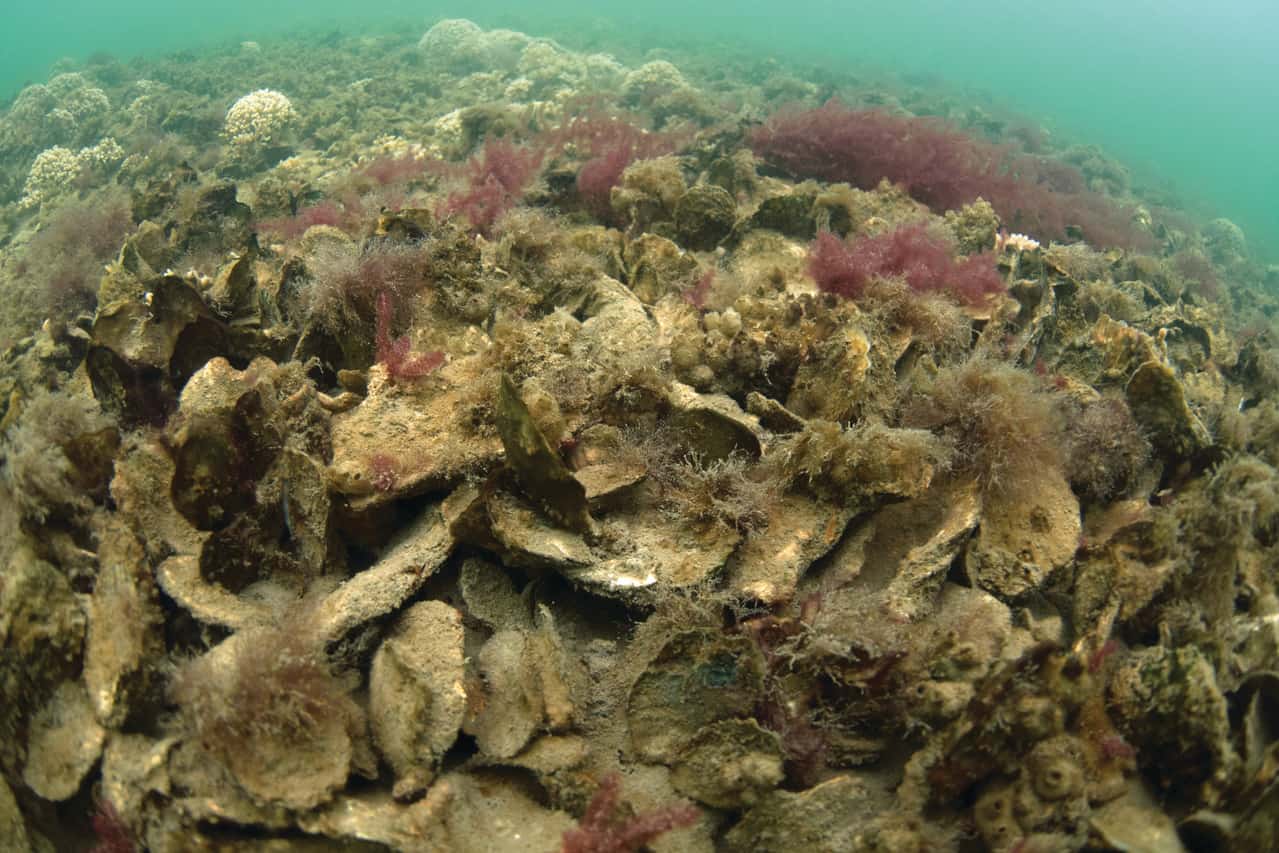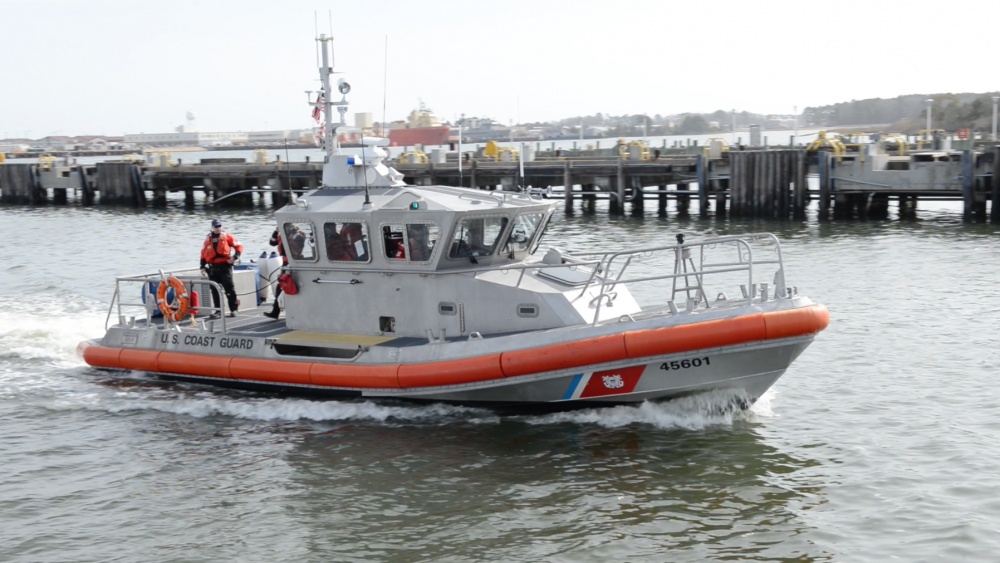Newport News Shipbuilding’s operations are so massive that it is building two new aircraft carriers. You can imagine how massive, then, its dry docks must be. But what to do when the hulking, steel gate to a dry dock has lived out its useful life?
This month, a dry dock caisson gate was deployed to the Tower Reef, an artificial reef just outside the mouth of the Chesapeake Bay. The gate joins unusual items like subway cars, tugboats and tanks in their final resting place on the ocean bottom.

The Tower Reef is a manmade structure that provides a habitat similar to a natural reef. According to the North Carolina Department of Environmental Quality, manmade materials “soon become encrusted and colonized by marine organisms, such as barnacles, soft corals, sponges, shellfish, and various algae and seaweeds. This provides food and refuge for small baitfish that, in turn, provide food for larger predatory fish.”
New structures need to be periodically added to the artificial reef as the older structures deteriorate.
The dry dock caisson gate was donated for that purpose by Newport News Shipbuilding. A dry dock caisson gate is a large floating steel gate that is used to seal water out of a dry dock. They let ships in and keep water out. A dry dock is a dock space where the water can be removed so the entire ship is serviceable for construction or repair. This massive gate is constructed of double steel walls and has five decks that measure 96 feet long, 42 feet deep, and 16 feet wide.
According to Zachary Widgeon of the VMRC, “The Newport News Shipyard [owned by HII] did the whole thing at no cost to VMRC. They offered the gate, towed it to the site, and sank it. We just had to tell them where to place it.”
Widgeon said there are no immediate plans for more large structures to be placed on the reef, but they will certainly be adding to it in the future.
The Tower Reef began back in 1970. That year, a group called TARAV (Tidewater Artificial Reef Association of Virginia) obtained permits for two artificial reefs off Virginia, one of which was the Tower Reef. According to a report by the Virginia Institute of Marine Science (VIMS), the first component of the reef was a menhaden trawler donated by Standard Products Company of Kilmarnock, Virginia.
Through the years, additional objects have been placed on the reef. These include landing craft, additional menhaden vessels, tugboats, and of course reef balls. The duties of TARAV are now administered by the Virginia Marine Resources Commission (VMRC).
The Tower Reef is a huge success, as the area is swarming with sea life. Anglers and divers find sheepshead and spadefish in abundance, and many additional species can be found depending on the time of year. Even bluefin tuna make occasional appearances.
There are a variety of public and private resources available online for locating and fishing the Tower Reef. The VMRC has a detailed diagram of the bottom with coordinates at mrc.virginia.gov/vsrfdf/pdf/tower_reef_grid.pdf.
-Kendall Osborne




